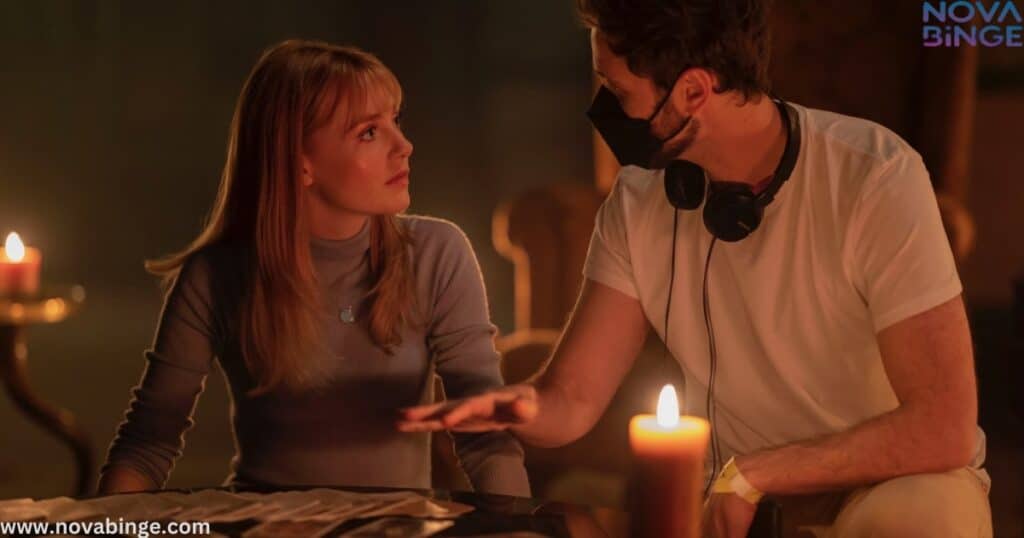In the realm of supernatural horror films, Tarot (Horrorscope) emerges as a chilling addition to the genre, captivating audiences with its blend of ancient mysticism and modern thrills.
This 2024 movie, based on the 1992 novel, weaves a tale of college students entangled in the ominous world of Tarot cards. But what truly sets this American supernatural horror film apart is its masterful use of filming locations.
Let’s embark on a journey through the atmospheric settings that bring this Sony Pictures production to life.
The Cinematic Alchemy of Tarot
Spenser Cohen and Anna Halberg, the creative minds behind Tarot, have crafted a narrative that hinges on the power of place.
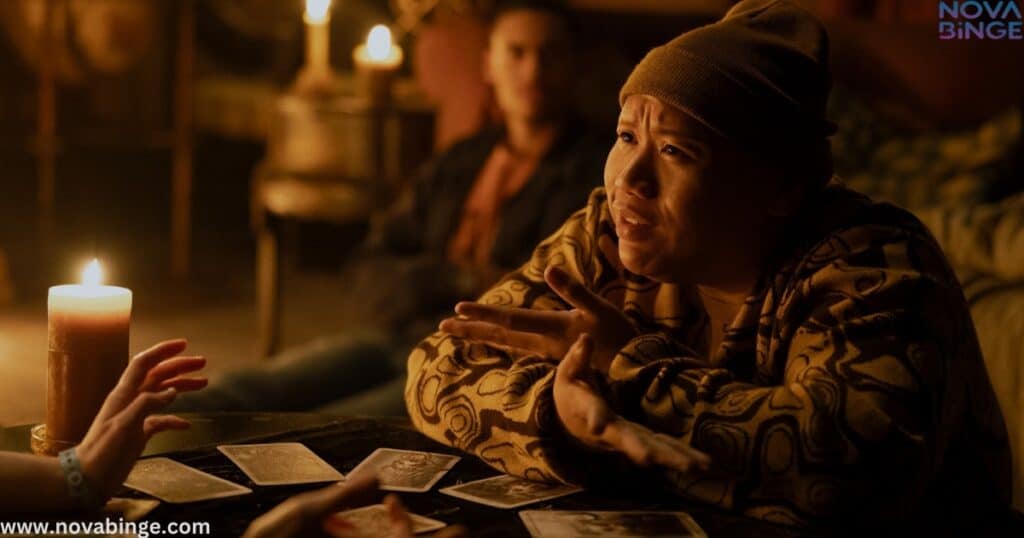
The film’s premise – a group of students unleashing a terrifying force through a mysterious Tarot card – demands a backdrop that can seamlessly blend the arcane with the everyday.
Horror films often rely heavily on their settings to create tension and fear. In Tarot, the locations are more than mere backdrops; they’re characters in their own right, each with a story to tell and secrets to reveal.
The Importance of Setting in Horror Films
| Element | Impact on Viewer |
|---|---|
| Architecture | Creates a sense of unease or claustrophobia |
| Lighting | Enhances shadows and creates a foreboding atmosphere |
| Local Lore | Adds depth and believability to supernatural elements |
| Contrast | Juxtaposes safety with danger for heightened tension |
Belgrade: Where Ancient Mysticism Meets Modern Thrills
The decision to use Belgrade, Serbia, as the primary filming location for Tarot was a stroke of genius.
This ancient city, with its rich history and eclectic architecture, provides the perfect canvas for a tale of supernatural horror.
Read more about this: Arrow Filming Locations
Why Belgrade Was Chosen
- Historical Depth: Belgrade’s millennia-old history infuses every frame with a sense of timelessness.
- Architectural Diversity: From medieval fortresses to brutalist structures, Belgrade offers a visual feast.
- Cultural Mystique: The city’s blend of Eastern and Western influences adds layers to the film’s mystical elements.
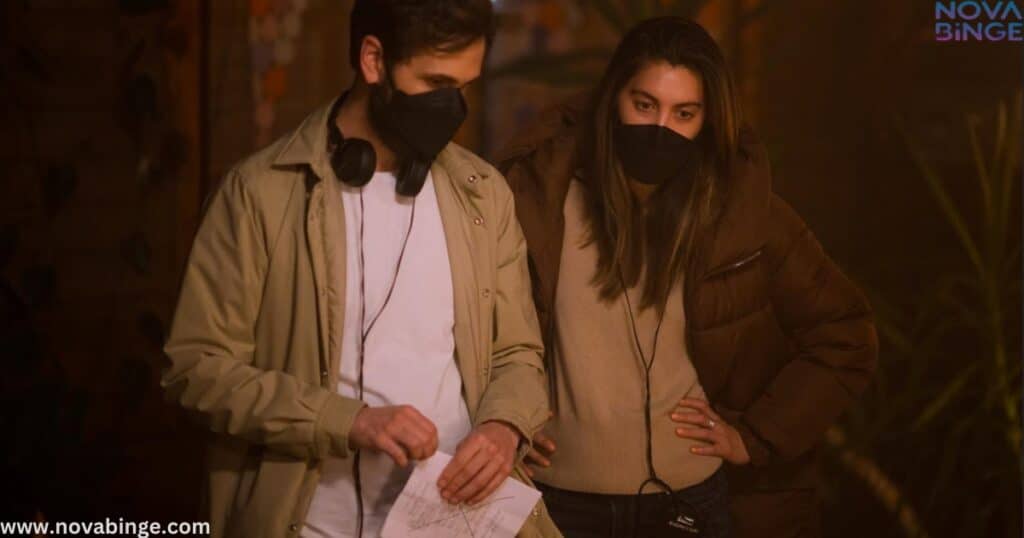
Iconic Belgrade Landmarks Featured in Tarot
Kalemegdan Fortress: A Fortress of Fear
Perched at the confluence of the Sava and Danube rivers, Kalemegdan Fortress serves as a formidable presence in Tarot. Its ancient walls and winding passageways become the stage for some of the film’s most heart-pounding scenes.
“Kalemegdan isn’t just a location; it’s a character with its own arc. Its stones have witnessed centuries of history, and in our film, they witness terrors beyond imagination.” – Nicholas Adams, Production Designer
Fun Fact: Kalemegdan Fortress has been destroyed and rebuilt over 40 times throughout its history, adding layers of tragic energy perfect for a horror setting.
Skadarlija: Bohemian Nightmares Come Alive
By day, Skadarlija is Belgrade’s charming bohemian quarter. But in Tarot, it transforms into a labyrinth of narrow cobblestone streets where shadows lurk and danger waits around every corner.
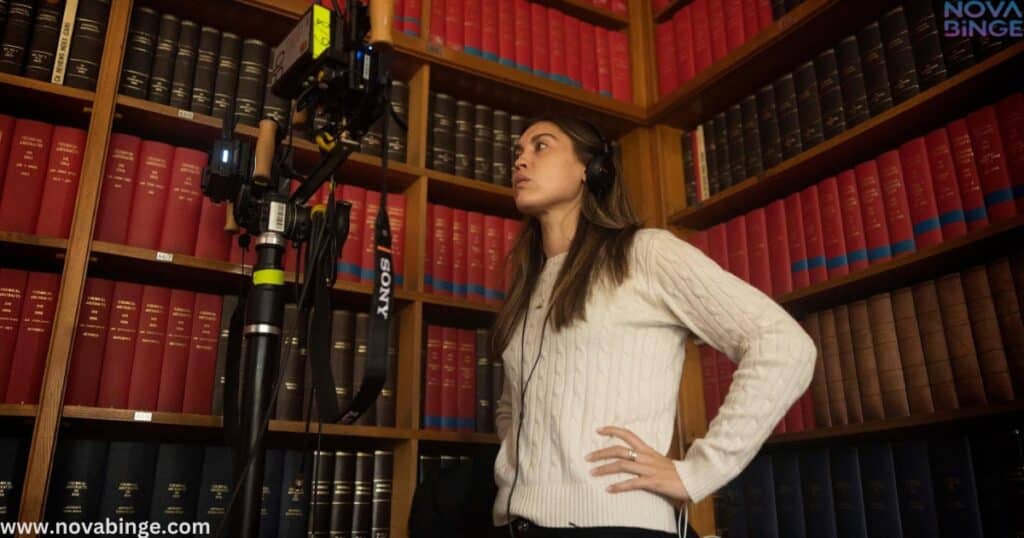
- Atmospheric Elements Used in Filming:
- Vintage street lamps casting eerie glows
- Mist machines to create an otherworldly ambiance
- Strategic use of local cafes and galleries as portals to the supernatural
Belgrade’s Architecture: Enhancing the Film’s Atmosphere
The city’s unique blend of architectural styles plays a crucial role in Tarot’s visual storytelling:
- Byzantine influences evoke ancient mysteries
- Ottoman structures hint at hidden knowledge
- Art Nouveau buildings provide a decadent backdrop for pivotal scenes
- Brutalist monuments create a sense of oppressive modernity
Behind-the-Scenes Challenges of Filming in Serbia
Filming in Belgrade wasn’t without its hurdles. The production team faced several challenges:
- Language Barrier: Overcoming communication issues with local crew and extras
- Permit Acquisition: Navigating Serbian bureaucracy to secure filming permissions
- Weather Unpredictability: Adapting to sudden atmospheric changes that affected lighting and mood
- Crowd Control: Managing curious onlookers in popular tourist areas
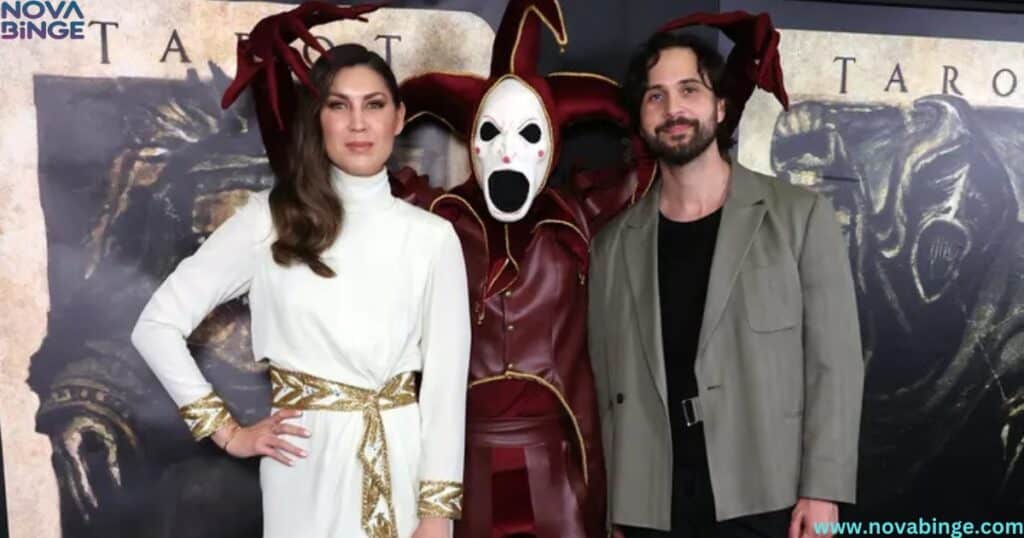
Despite these obstacles, the result is a visually stunning and authentically eerie backdrop that elevates Tarot beyond typical genre fare.
Boston: A Tale of Two Cities
While Belgrade provides the film’s old-world charm, Boston, Massachusetts, serves as a stark contrast, representing modernity and academia in Tarot’s narrative tapestry.
Contrasting Boston’s Modernity with Belgrade’s Old-World Charm
The juxtaposition of these two cities creates a unique visual and thematic tension:
| Belgrade | Boston |
|---|---|
| Ancient fortresses | Modern skyscrapers |
| Winding cobblestone streets | Grid-like city layout |
| Eastern European mystique | New England pragmatism |
| Centuries-old traditions | Cutting-edge research facilities |
This contrast is not just visual; it’s integral to the story, representing the clash between ancient mysticism and contemporary skepticism that drives the plot forward.
Specific Boston Locations and Their Significance to the Plot
Harvard University: Intellectual Horror
Harvard’s hallowed halls serve as more than just a backdrop; they’re a crucible where rational thought confronts inexplicable phenomena.
- Widener Library: Where our protagonists first discover the ominous Tarot deck
- Harvard Yard: The site of a chilling public manifestation of the cards’ power
- Science Center: A bastion of logic that becomes a battleground of belief
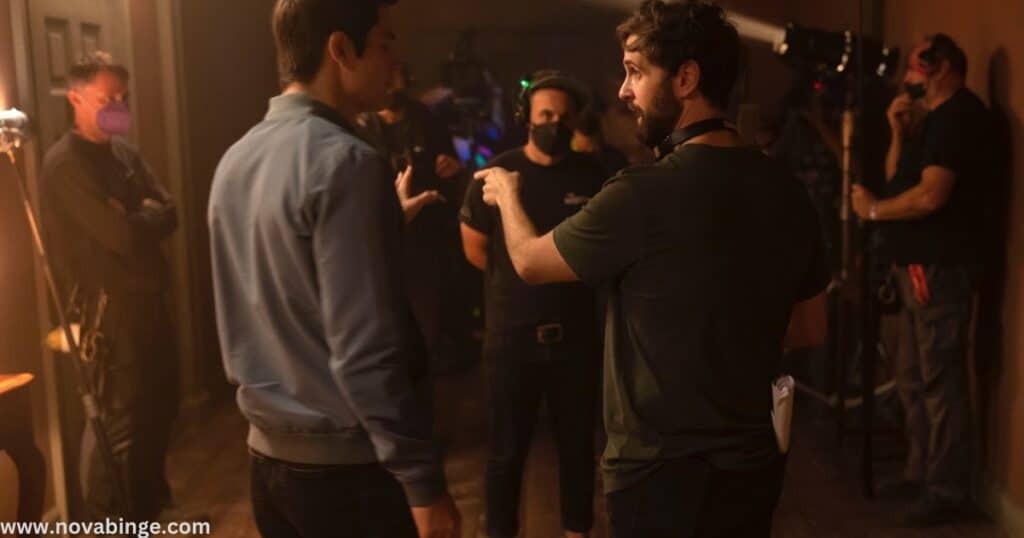
“We wanted to show how even the most rational minds can be shaken when faced with true horror. Harvard isn’t just a setting; it’s a character whose very foundation of knowledge is challenged.” – Anna Halberg, Co-Director
Back Bay: Where Suburban Nightmares Unfold
The elegant brownstones and tree-lined streets of Back Bay provide a false sense of security that the film gleefully shatters.
- Commonwealth Avenue: Its picturesque mall becomes a gauntlet of supernatural trials
- Boston Public Garden: A serene oasis turned sinister as the Tarot’s influence spreads
- Copley Square: The modern heart of the city, where the climactic confrontation unfolds
How the Film Portrays Boston’s Unique Character
Tarot doesn’t just use Boston as a generic urban setting; it taps into the city’s distinct personality:
- Intellectual Prowess: The film plays with Boston’s reputation as an academic powerhouse
- Historical Significance: References to Salem and New England’s occult history are woven throughout
- Sports Culture: Even Fenway Park makes an appearance, its Green Monster serving as an unexpected horror set piece
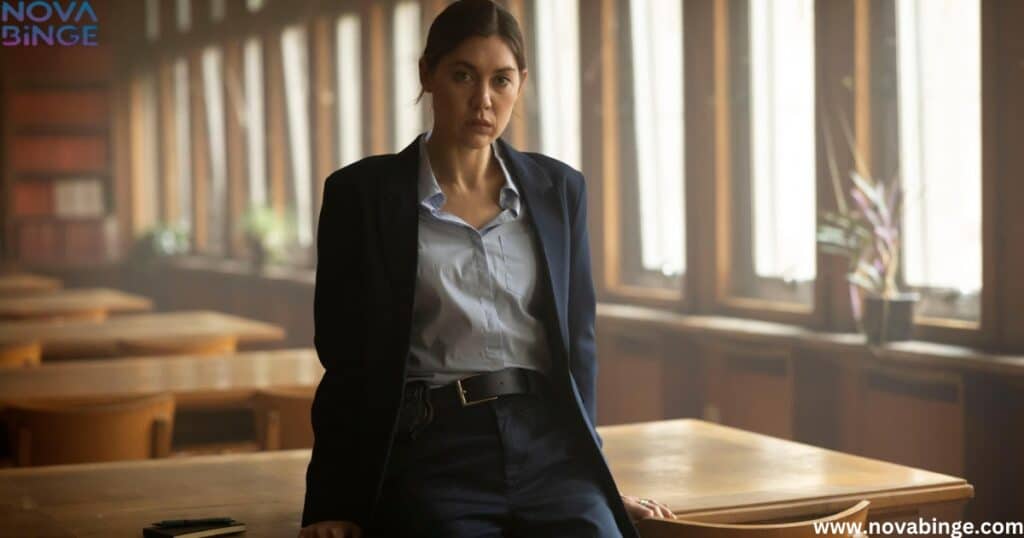
The Art of Location Scouting for Tarot
The process of finding the perfect locations for Tarot was as intricate as the film’s plot. Let’s peek behind the curtain at how these atmospheric settings were chosen.
Interview Snippets with the Location Scout
“Our goal was to find places that could tell a story even without actors in the frame. In Belgrade, history does half the work for you. In Boston, it’s about finding those pockets of mystery in a modern setting.” – Maria Djurovic, Location Scout
Criteria for Selecting the Perfect Spooky Backdrop
The team used a detailed checklist when evaluating potential locations:
- Visual Impact: Does the location immediately create a mood?
- Historical Resonance: Can the place’s history enhance the story?
- Practical Filmmaking Concerns: Lighting, sound, and logistical accessibility
- Uniqueness: Has this location been overused in other films?
- Thematic Relevance: Does it reflect the Tarot’s symbolism?
Unexpected Locations That Made the Final Cut
Some of the most effective scenes in Tarot take place in locations that weren’t initially on the radar:
- An abandoned sugar factory outside Belgrade: Its rusting machinery became the setting for a pivotal chase sequence
- A hidden courtyard in Boston’s North End: This overlooked spot perfectly captured the feeling of being watched by unseen forces
- The catacombs beneath Kalemegdan: Not typically open to the public, these subterranean passages added genuine claustrophobia to key scenes
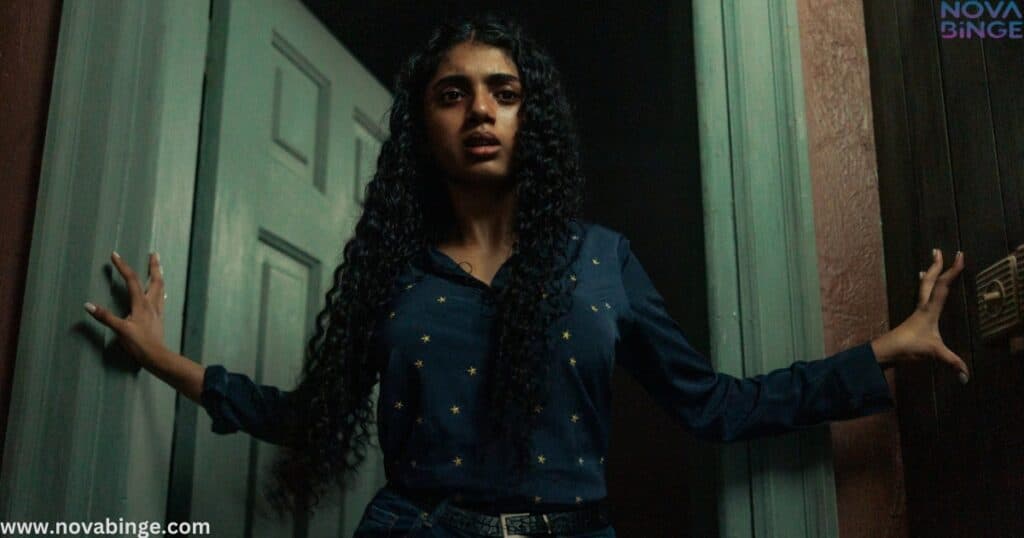
Crafting Atmosphere: From Real Locations to Screen Magic
The raw power of Tarot’s locations is undeniable, but it takes cinematic artistry to translate that atmosphere to the screen.
Set Design: Complementing Natural Locations
The production design team, led by the visionary Nicholas Adams, worked tirelessly to enhance each location:
- Custom Tarot-inspired murals were created to adorn blank walls
- Antique furniture and occult paraphernalia were sourced to dress interior scenes
- Subtle set dressing was used to make modern locations feel timeless
Lighting Techniques Used to Enhance Horror Elements
Cinematographer Lisa Chang employed a variety of techniques to amplify the sense of dread:
- Low-angle lighting to create elongated, menacing shadows
- Color temperature manipulation to shift from warm, safe tones to cool, unsettling hues
- Practical light sources like candles and old lamps to create authentic period feels
Sound Design: Capturing the Eerie Essence of Each Location
Sound designer Omar Fadel discusses his approach:
“Each location has its own voice. In Belgrade, we layered in subtle echoes of ancient chants. For Boston, we created a soundscape of muffled urban noise that feels just slightly ‘off’. It’s about creating unease through audio cues the audience might not consciously notice.”
Cultural Influences on the Film’s Aesthetic
Tarot doesn’t just use its locations as pretty backdrops; it deeply integrates the cultural heritage of both filming sites into its narrative and visual style.
Serbian Folklore and Its Impact on the Movie’s Visuals
- Incorporation of Slavic symbols in set designs and props
- References to local legends like the vampire Sava Savanović in background elements
- Use of traditional Serbian textiles in costume design for key characters
American Urban Legends Woven into Boston Scenes
- Nods to the “Boston Strangler” in certain tense moments
- References to the “Curse of the Bambino” as part of the city’s superstitious undercurrent
- Incorporation of local ghost stories into the film’s mythology
How the Blend of Cultures Adds Depth to the Storytelling
This cultural fusion creates a unique mythology for Tarot, one that suggests the universality of human fears while respecting the specific traditions of each location.
Fan Experiences: Touring the Tarot Trail
The release of Tarot has sparked a new form of tourism, with fans eager to walk in the footsteps of their favorite characters and relive the film’s most spine-tingling moments.
Popular Filming Locations Fans Can Visit
In Belgrade:
- Kalemegdan Fortress
- Skadarlija Quarter
- St. Sava Temple (used for exterior shots)
In Boston:
- Harvard University campus
- Back Bay neighborhood
- Copley Square
Local Tour Guides’ Insights on the Film’s Impact
“Since Tarot’s release, we’ve seen a 200% increase in requests for ‘dark history’ tours of Belgrade. People want to feel that connection to the otherworldly that the film captured so well.” – Milos Petrović, Belgrade Tour Guide
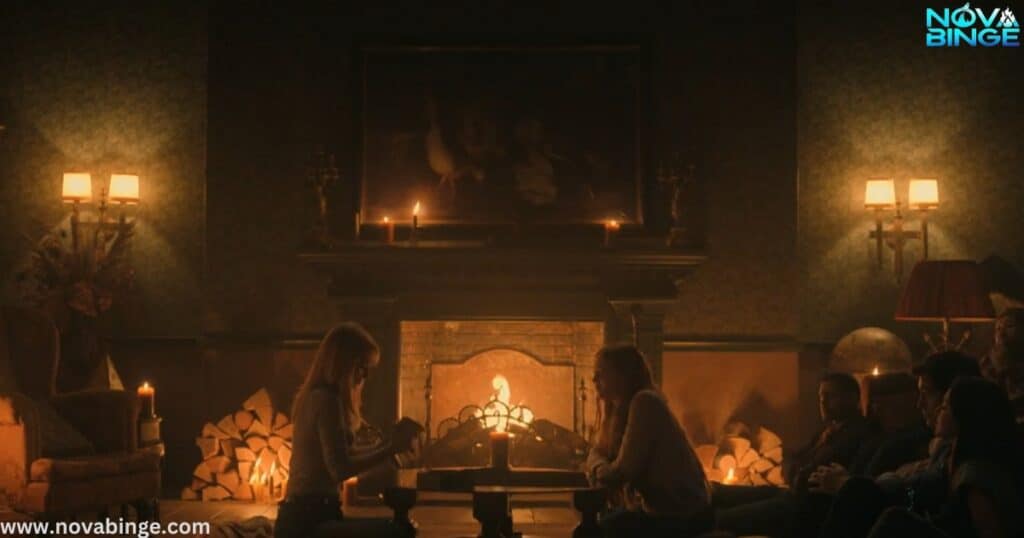
Safety Tips for Those Brave Enough to Explore
- Always tour in groups, especially in less frequented areas
- Respect local customs and sacred sites
- Be aware that some filming locations may be on private property
- Carry a copy of your passport and emergency contact information
The Directors’ Vision: Bringing Tarot to Life
Spenser Cohen and Anna Halberg’s collaborative direction was key to realizing Tarot’s unique vision. Their approach to the locations was as much about feeling as it was about visuals.
Quotes from the Filmmakers on Location Choices
Cohen shares:
“We didn’t want to just show these places; we wanted the audience to feel like they could reach out and touch the cold stone of Kalemegdan or smell the musty books in Widener Library. It’s about creating a tangible sense of place that grounds the supernatural elements.”
Halberg adds:
“The duality of our locations mirrors the duality in the Tarot itself. Belgrade represents the mysterious past, while Boston stands for the rational present. But in both places, the veil between worlds is thin.”
How the Locations Influenced Script Rewrites
The richness of the filming locations led to several on-the-spot script changes:
- A chance discovery of an ancient well in Belgrade inspired a new pivotal scene
- The unique acoustics of Harvard’s Sanders Theatre led to a rewrite of a key monologue
- Boston’s underground tunnel system spawned an entire new subplot
Challenges Faced During International Production
Producing a film across two continents came with its share of hurdles:
- Logistical Coordination: Syncing schedules between Serbian and American crews
- Cultural Sensitivity: Ensuring respectful representation of both locations
- Technical Consistency: Maintaining visual and audio continuity across different filming environments
- Weather Variability: Adapting to seasonal changes between shooting blocks
Comparative Analysis: Tarot vs. Other Horror Films’ Locations
Tarot’s use of location sets it apart from many of its genre contemporaries. Let’s examine how:
What Sets Tarot’s Locations Apart
- Dual-City Approach: Unlike films that stick to one primary location, Tarot fully utilizes two distinct urban environments
- Historical Depth: Both Belgrade and Boston offer centuries of history, adding layers to the narrative
- Architectural Diversity: From medieval to modern, the film showcases a wide range of built environments
- Cultural Richness: The blend of Eastern European and New England influences creates a unique atmospheric tapestry
Innovative Use of Space and Geography in Storytelling
Tarot employs several innovative techniques:
- Parallel Editing: Cutting between Belgrade and Boston to create thematic links
- Location as Character: Treating the cities as active participants in the story rather than passive backdrops
- Geometric Symbolism: Using the layout of streets and buildings to subtly reinforce Tarot card imagery
- Sonic Landscapes: Creating distinct audio profiles for each location to enhance the sense of place
Conclusion: The Lasting Impact of Tarot’s Dual-City Backdrop
As the credits roll on Tarot, it’s clear that the choice of filming locations was far more than a mere aesthetic decision. Belgrade and Boston aren’t just settings; they’re integral to the film’s DNA, informing every aspect of its storytelling and visual language.
How the Locations Contribute to the Film’s Uniqueness
- They provide a rich tapestry of history and culture that deepens the narrative
- The contrast between the two cities mirrors the film’s themes of old vs. new, mysticism vs. rationality
- The authentic locations lend credibility to the supernatural elements, grounding them in real-world spaces
The Future of Multi-Location Horror Filmmaking
Tarot sets a new standard for how horror films can use diverse locations to enhance their storytelling:
- It demonstrates the power of cultural fusion in creating unique cinematic mythologies
- The film showcases how different urban environments can be used to explore various facets of fear
- It opens up possibilities for international co-productions that can tap into global audiences
As fans continue to dissect every frame and visit the haunting locations of Tarot, one thing is certain: the film’s innovative use of its dual-city backdrop will influence horror filmmaking for years to come.
Whether you’re a seasoned horror aficionado or a curious newcomer, Tarot offers a globe-spanning journey into terror that’s as enriching as it is frightening.
So, the next time you find yourself walking the cobblestone streets of Belgrade or hurrying across Harvard Yard, remember – the veil between worlds might be thinner than you think.
And who knows? That Tarot deck in the antique shop window might be more than just a souvenir.
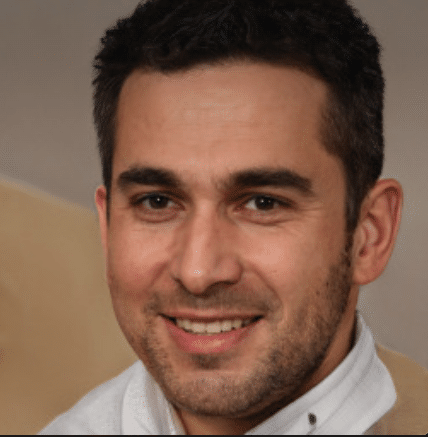
David Lee is a seasoned writer specializing in filming locations. With a keen eye for detail and a passion for cinema, David explores the stories behind iconic sites and shares unique insights that bring your favorite films and series to life.

